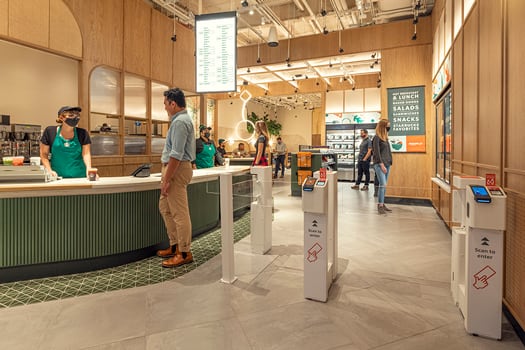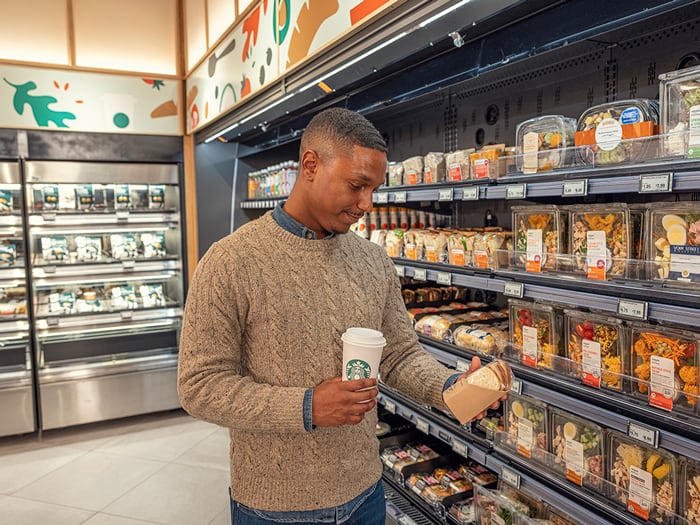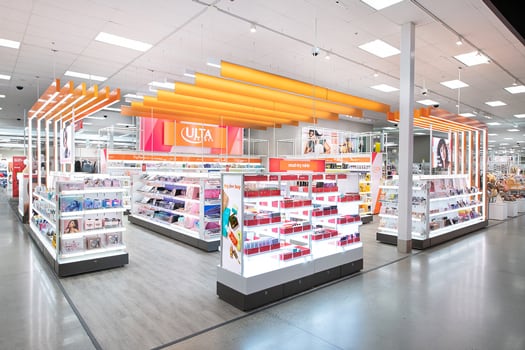
Brand collaboration can improve the customer experience, elevate brands, and drive sales.
“Alone we can do so little; together we can do so much,” Helen Keller once said. The same can be said for retailers as they seek to meet consumer expectations in a post-pandemic climate. Today’s shoppers want speed, simplicity, and flexibility — together with an exciting and memorable in-real-life shopping experience.
As a result, an ecosystem of retail partnerships has emerged as savvy brands realize they have a lot to gain by working together and collaborating for success. “Collaboration helps everybody increase engagement,” said Stacey Widlitz, founder of SW Retail Advisors, during one of our recent Voice of the Retail Revolution webinars. “It adds touchpoints — one plus one equals three.”
Case in point: Macy’s and WHP Global, which acquired the iconic Toys R Us brand last year, recently announced it will bring Toys R Us-branded shops to every Macy’s store, building upon a successful store-in-store partnership that launched last year. “Customer response to our partnership with Toys R Us has been incredible and our toy business has seen tremendous growth,” said Macy’s Chief Merchandising Officer Nata Dvir in a recent press release. In Macy’s reported earnings for the first quarter of 2022, toy sales were 15 times higher than the comparable period prior to the Toys R Us partnership.
Perhaps no other retailer understands the power of partnerships as well as Target, which debuted its first partnership with the Michael Graves Design Collection back in 1999. Since then, the big box retailer has partnered with such designers as Isaac Mizrahi, Missoni, Jason Wu, Lilly Pulitzer, Marimekko, Victoria Beckham, Hunter, and Chip and Joanna Gaines. More recently, Target has launched major partnerships with leading national brands, including Ulta Beauty, Disney, and Apple.
Retail partnerships generally work best when two brands have complimentary but non-competitive audience bases. And like any successful partnership, the best brand collaborations are mutually beneficial. Here are the top four things to know about this growing trend:
1. Partnerships introduce e-commerce brands to the power of brick-and-mortar.
With a more than 8% growth rate annually since 2018, physical retail continues to represent the bulk of retail spend. While online sales ramped up during lockdowns — accounting for 19% of total retail sales — each year since, consumers have increasingly shown a preference for in-store shopping and the instant gratification it delivers. According to the Census Bureau of the Department of Commerce, e-commerce sales accounted for just 14.3%, or $250 billion, of total retail sales in Q1 2022, down from 14.9% of total sales in 2021.
For e-commerce brands looking to grow, partnering with an established brick-and-mortar brand offers an opportunity to test the waters and build the kind of engagement that comes when customers can touch and feel their products and receive real-time help and expert advice. At a time when customer acquisition and social media advertising costs continue to rise and are increasingly less effective, brand partnerships are a cost-effective way to build new customer bases.
“Customer response to our partnership with Toys R Us has been incredible and our toy business has seen tremendous growth.”
—Nata Dvir, Macy’s Chief Merchandising Officer
2. Working together allows brands to share their resources and specialties.

A great example of this synergy is Starbucks’ recent collaboration with Amazon Go to launch a new store concept that capitalizes on each brand’s strength, bringing together the connection and comfort that a Starbucks café offers and the convenience of Amazon Go’s Just Walk Out technology. “Our goal with this new store concept is to give our customers the ability to choose which experience is right for them as they go through their day, whether it is utilizing the Starbucks and Amazon apps to purchase food and beverages on the go or deciding to stay in the lounge for the traditional third place experience Starbucks is known for,” said Starbucks Senior Vice President of Global Growth Katie Young in a press release.
“After a year of dramatically shifting routines and priorities, we know customers are eager to reprioritize well-being .”
—Kylie Bentley, Whole Foods Market Team Leader for Nutrition and Compliance
3. Alliances help established retail brands reshape and reinforce identity.
When Nordstrom became the first retail partner for plus-size luxury brand 11 Honoré in 2019, it aligned with their commitment to inclusivity and helped shape their identity as a pioneer in the size inclusive movement. Likewise, Whole Foods Market’s recent collaboration with meditation app Headspace helped drive home its reputation as a one-stop destination for holistic, total body well-being needs while also addressing health priorities shaped by COVID-19. “After a year of dramatically shifting routines and priorities, we know customers are eager to reprioritize well-being, and the beginning of spring is a great time to reset your meals and renew your mind,” said Kylie Bentley, Whole Foods Market team leader for nutrition and compliance, in a press release about the partnership. “Whole Foods Market is a well-known destination for nutrition food that inspires wholesome meals. Now, together with Headspace, we are able to provide exciting tools for mindfulness.”

4. Collaboration drives category expansion.
Target’s partnership with Apple — which doubles Apple’s footprint in select Target stores — allows Target to build upon its strength as a go-to destination for electronics. The shop-in-shop locations are staffed with Apple-trained Target team members, offering a convenient way for customers to shop for Apple products while picking up groceries, clothing, and housewares.
Likewise, Target’s partnership with Ulta Beauty and “shop-in-shop” concept brought Ulta’s best in-class beauty authority to Target stores, shifting consumer perception of the retailer as a place to purchase high-end cosmetics, skin care products, hair care products, and more.
“Ulta Beauty at Target is unmatched in the industry, bringing guests the opportunity to discover new prestige brands while they shop Target’s incredible beauty assortment,” said Target Chief Growth Officer Christina Hennington in a press release. “This unique partnership is another way we continue to elevate the guest experience across our multi-category business to drive traffic and preference as we meet guests’ needs in innovative ways. With two powerhouse retailers, our collective brand love, loyalty and omnichannel expertise will inspire guests and raise the bar for the beauty shopping experience.”
While partnering up with complimentary brands provides an array of benefits for consumers — including convenience, value, and an enhanced shopping experience — the biggest beneficiaries are the brands themselves. This new collaborative commerce offers growth opportunities, new efficiencies and proficiencies, and real financial rewards that come from expanded customer bases and increased customer loyalty. As retailers look to innovate and keep pace, brand collaboration will increasingly play a key role in revolutionizing the new retail landscape.
Interested in working together? Connect with us!